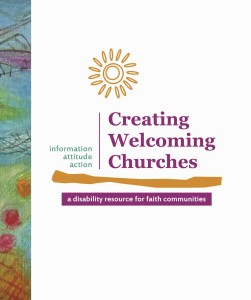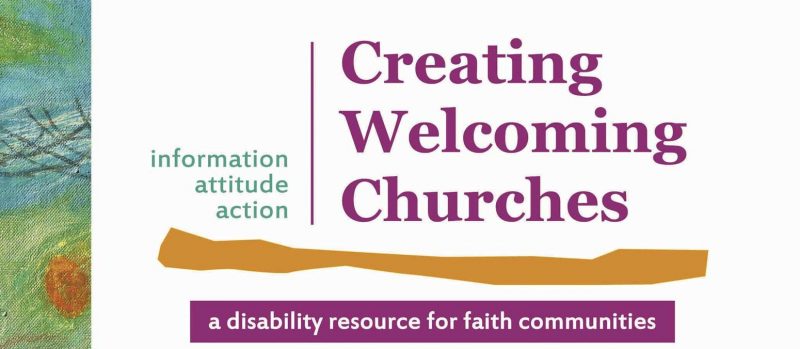by ROWENA OREJANA
Is your church welcoming? Or does it have hurdles that discourage some people from attending Mass?

Creating Welcoming Churches, a book written and published by the Disability, Spirituality and Faith Network, provides a checklist so parishes can see what they need to do to make their churches accessible to people of all abilities. It is a practical guide that will
reduce the hurdles that people with different impairments face just to practise their faith.
Network members Trish Harris and Pamela Cook were part of the group that created the book. It was funded by the Joint Special Project Fund of the Association of Presbyterian Women and the Methodist Women’s Fellowship. Creating Welcoming Churches can be ordered through the Network’s website www.dsfnetwork.org and costs $10 + $5 pp.
Ms Harris, who conducted a workshop for Wellington archdiocese last year, pointed out that according to the last census, a quarter of New Zealand’s population have some kind of disability.
“That number would be reflected in parishes. Also, we’re an ageing population and often with age comes health related impairment, so it’s a really big issue,” she said.
The book has a checklist on how to communicate with people with disabilities, as well as what can be done to make the church environment accessible to them. It also gives advice that may seem basic (“speak directly to the someone with a disability, not to a support person or a sign language interpreter”), yet people don’t seem to know.
“It’s not just accessibility in the physical sense. It’s the attitudes of people. How do we care for people who have hearing impairments or sight impairments who need that special seating? It is the general understanding … that people don’t want to be sat in the
background because that’s where the wheelchairs fit. They need to be able to be part of the congregation,” said Mrs Cook.
Mrs Cook and Ms Harris, both mobility- impaired, said access could be a key factor in their decision to attend a particular church.
“Often with disability, you’re battling energy and having to measure out energy quite carefully. If I do this activity today, then I won’t have energy to go out tomorrow. That’s the reality of it,” Ms Harris explained. “And so when a building involves more walking
because there aren’t mobility parks, or involves more effort because there are stairs, then that does becomes a factor as to whether you want to go there. Sometimes, it’s not just whether you want to go there, but whether you are actually able to.”
They admitted that some of the things the parish might need to do could be costly, but there are a lot of things that are simple to implement, such as large-print paper copies for people with sight impairment.
They added that there is no lack of goodwill. “It’s sometimes hard to point out or challenge something when you are in a group and you know they are trying to do their best,” said Ms Harris.
She said the book gives disabled people a resource they can refer towhen they want to make changes.
Mrs Cook added that sometimes people make silly mistakes just because they didn’t consult the person with the disability in the first place.
“The message we are trying to get across is to use the checklist, read the book, discuss it with people who have the disability and work on making your place of worship a welcoming
place,” she said.
“It’s people’s attitude of inclusiveness, including people with disability as part of the congregation, not as somebody apart who needs special care and attention.”
Guide helps parishes to be welcoming to all

Posted in Featured
Good show.